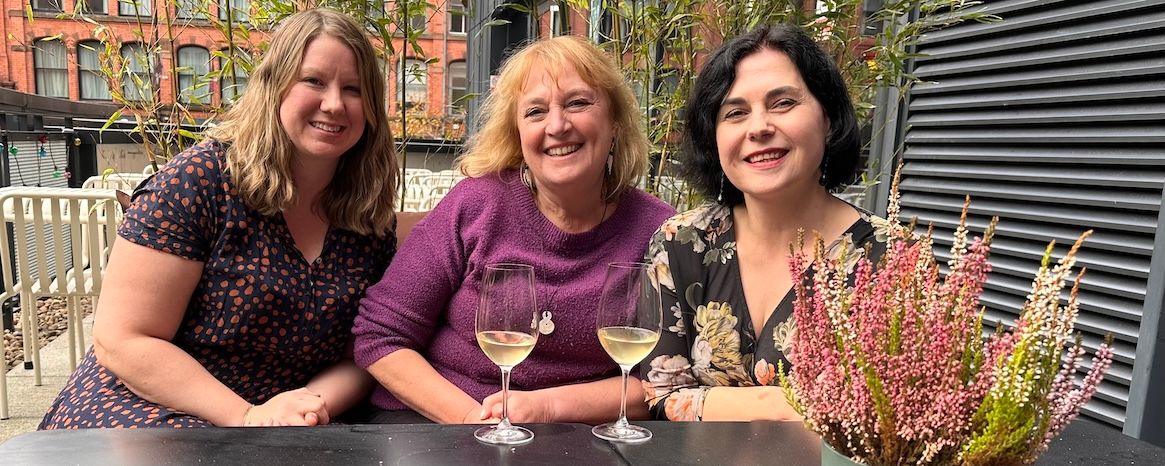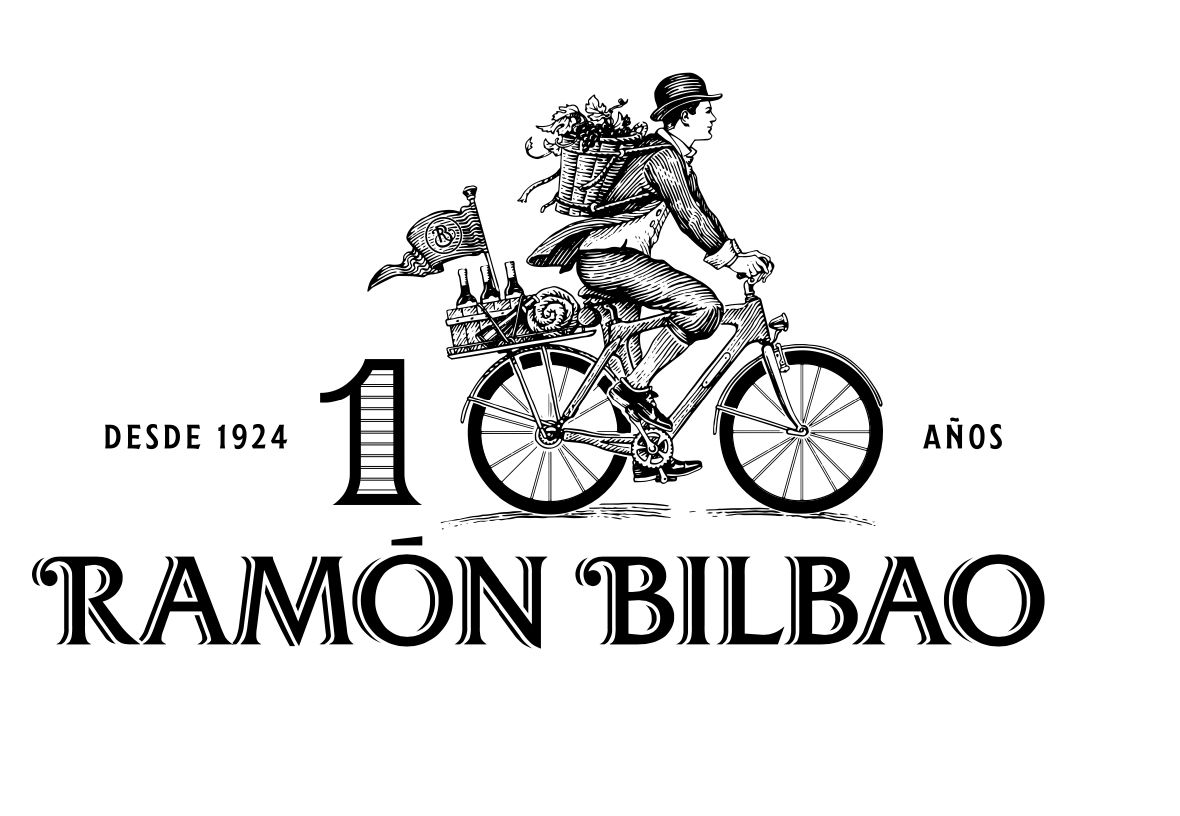Andrew Murray Watson claims to have made a gin that is inspired by the streets and culture of Brixton, using as many local ingredients and influences as possible.
Think of Brixton and botanicals and bees are nowhere near the first things that come to mind. But for Andrew Murray-Watson and Calandra Smith they are the foundations on which their new Brixton Gin brand are based. Botanicals that, where possible, have been grown on the streets and within the Brixton community. Ingredients that are then blended with honey taken from bees that do their buzzing in this still hip and happening part of south London.
Together they help create a gin that, just on pulling the cork, stands out in a line up. A beautifully fragrant, floral nose is followed by a sweet, vanilla and, yes, honeyed palate. Not, to be honest, the kind of gin you would expect to come from the hard, urban streets of Brixton.
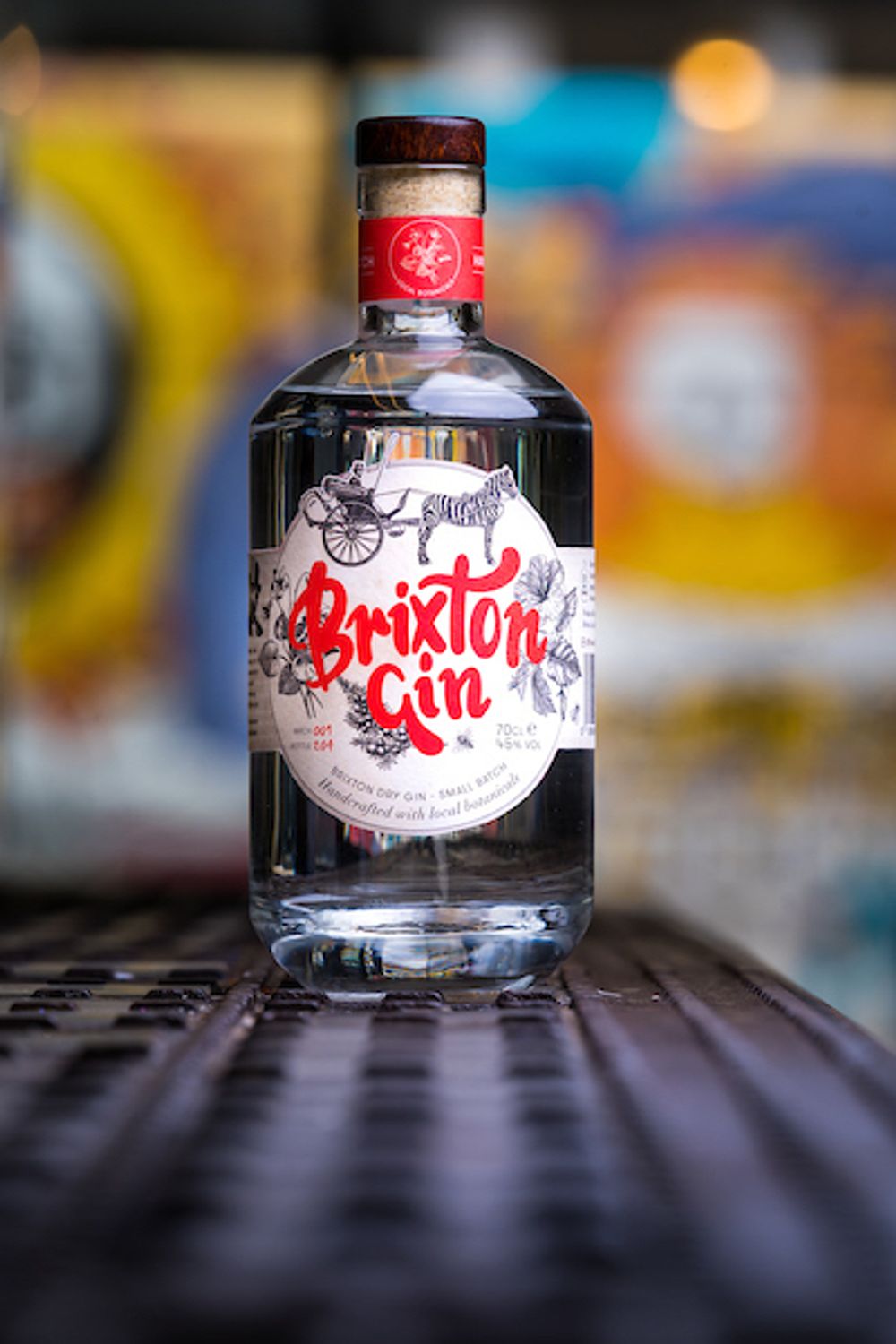
Brixton Gin hopes to capture the spirit of where it comes from
But then that’s very much the point. Brixton, as Murray-Watson points out, is all about doing things in its own way and with no other gin to go by, they were left to their own devices to create a gin that is as different and distinctive as the place where it is from.
When he first started to look into creating a gin he was surprised to find it would be the first from the area. “It seemed mad to be that Brixton did not have his own gin,” he says. “It’s an international destination for food and drink so it just made a lot of sense to us.”
Creating the right gin
With his own drinks store, and a background in drinks marketing and communications – including previously doing the PR for Oddbins – Murray-Watson is well versed in what a good gin should taste like. But not the ins and outs of the distilling process.
That’s where he sought help from the best in the business. The first recruit to the project was Spirits Sense Limited. The team at Spirits Sense led by Abhishek Banik, was given the brief to create the Brixton Gin recipe. The team spent a great deal of time in the company of Murray-Watson and Smith, walking the streets of Brixton to get a handle on the project. The team’s remit in creating a recipe for Brixton Gin was to create something bold and distinctive using as many local ingredients and botanicals as possible, says Murray-Watson.
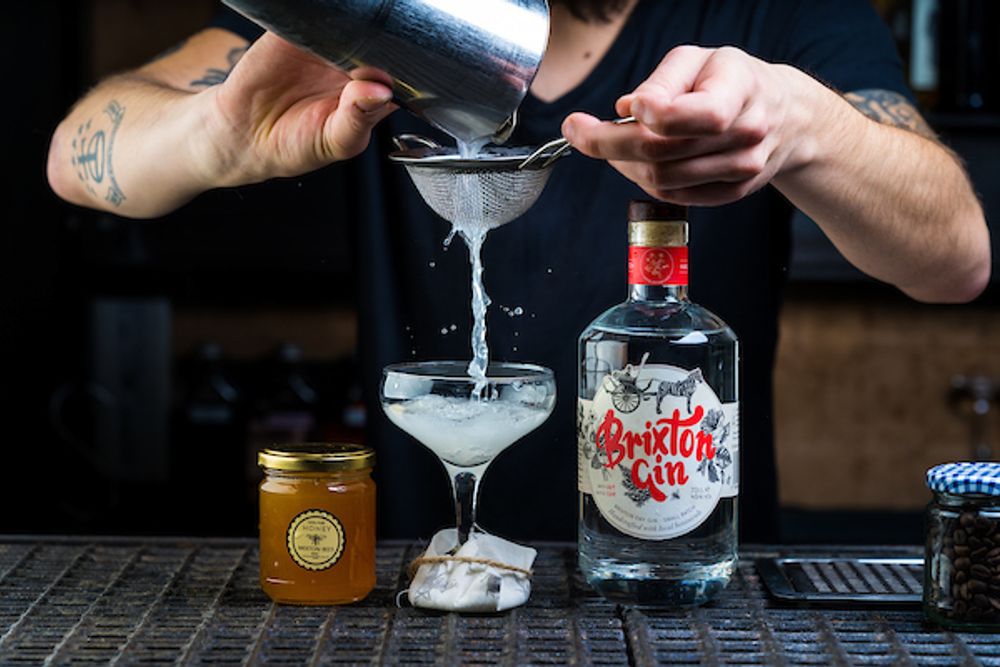
The idea was to create a gin that could be drunk in a G&T but also work well in cocktails and martinis
The team then approached Moses Odong, who had swapped sitting behind a wheel as a London taxi driver as a career, to learning, from scratch, how to become a distiller. He is now running his own multi-award winning micro-distillery and as well as Brixton Gin produces his own brand of rums and gins under the equally appropriate name of Cabby’s, from the Taxi Spirit Company.
“We wanted to create a brand that would be distinct in a crowded market. That would stand out on a back bar and encapsulate Brixton on the label,” Murray-Watson says. “It also had to be bold and vibrant. “We then left the team at Spirits Sense and Taxi Spirit to work their magic.”
Choosing the right style
The shortlist of five recipes was whittled down to a final two: a choice between a more classic London gin style, and a bolder, floral, fragrant style based on combining classic junipers with hibiscus, raw Brixton honey and wood violet.
Murray-Watson then took the two recipes and tried them out on bartenders, restauranteurs, gin-lovers and drinks contacts to see which they preferred – and why.
“They all voted for the fragrant style which they saw as being slightly sweeter than a traditional gin. The advice that came back was would be great in a classic G&T but also one that could appeal as a cocktail gin and served with low sugar tonics and mixers. A fantastic martini gin where the subtle violet notes gives it a very different and distinct flavour profile.

Most of the ingredients and botanicals all come within Brixton itself
It also had to be a brand that was very much part of the Brixton community. It works with Urban Growth that is dedicated to preserving and promoting green spaces in densely populated and urban areas of London to help source and develop potential botanical growing areas in the Brixton district.
St Matthews Church in Brixton has his own orchard from which is now home to newly planted juniper trees, angelica root and other botanicals. Pop Brixton is growing their coriander.
“We are committed to growing as many botanicals as we can in central Brixton, so our gin is literally rooted in the neighbourhood” he says.
Next steps
As a start up the brand has been launched as asset tight as possible and the plan now is to look to raise money for the next stage in its growth and add to the initial investors that helped get the brand off the ground.
The plan is to open and run its own micro distillery in Brixton itself that would also have its own bar and events space, says Murray-Watson.
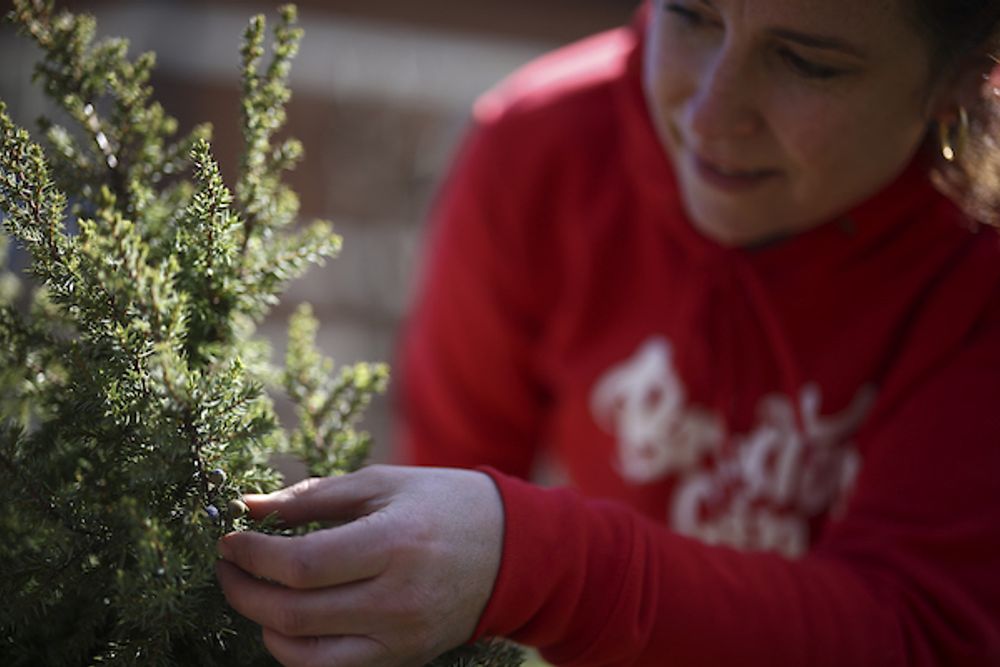
Even the bees of Brixton have helped bring Brixton Gin to life with local Brixton honey a key ingredient
For a brand that was only launched in November 2020 it has already come a long way. It has distribution in key accounts including Oddbins, Masters of Malt and Matthew Clark, Enotria & Coe, 31 Dover and The Drinks Club and is in around 80 venues, mainly in London and down to the south coast in Brighton.
“Brixton clearly has its fair share too. We are also slowly starting to crack the big distributors,” says Murray-Watson. “Roll out, though, has been more complicated thanks to the various lockdowns.”
He also recognises that it is not the best time to be introducing a new brand in what is more of a cautious market. Which is why he is also working with Nightcap Brands, the specialist sales and marketing agency for the premium on-trade, to represent the brand and introduce it to potential customers.
“They are working wonders for us and opening up doors. They are basically our extended sales team on the ground.” He adds: “We don’t want to be a brand that is lost on a big distributor’s books. We need a sales team that can navigate those choppy waters between the venue and the distributor and Nightcap Brands are doing that that very well.
“They can go out to outlets and start to create demand for the gin from restaurants and bar customers. We can then use that demand to go to distributors and show there are customers keen to take the brand on.”
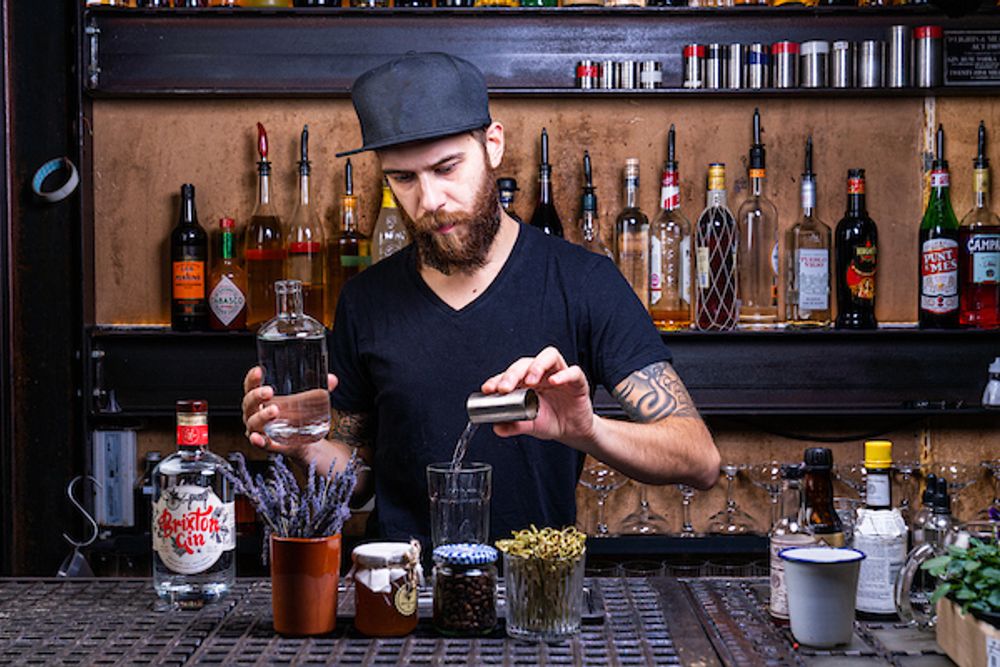
Brixton Gin has already been picked up by 80 venues and is being pushed by major distributors
Murray-Watson also sees big potential for the brand in specialist retail and independent wine merchants and already has a good spread of outlets stocking it across south London, Tunbridge Wells and into Brighton.
“Independent wine merchants really are our bread and butter target market,” he says.
For a start up brand it is also about juggling distribution with the costs and cash flow that is tied up in production and the supply chain, he stresses. It is currently distilling and bottling around 2,500 bottles at a time, which is about the right economy of scale it can work to.
The gin is positioned at the premium end of the market at £34.99 RRP which Murray-Watson sits nicely in the “sweet spot of gin of between £34 to £40”. “Sales drop if you go much above that, but true gin lovers are comfortable paying that much for a good quality brand. Which offers a healthy caring for the wholesaler and distributor too.”
Look and feel
As well as having the right liquid it was vital for the brand to have a compelling look and feel so it stands out on the back bar or shelf, says Murray-Watson. On first sight a label that depicts a man in a trap being pulled along by a zebra does not exactly scream Brixton at you.
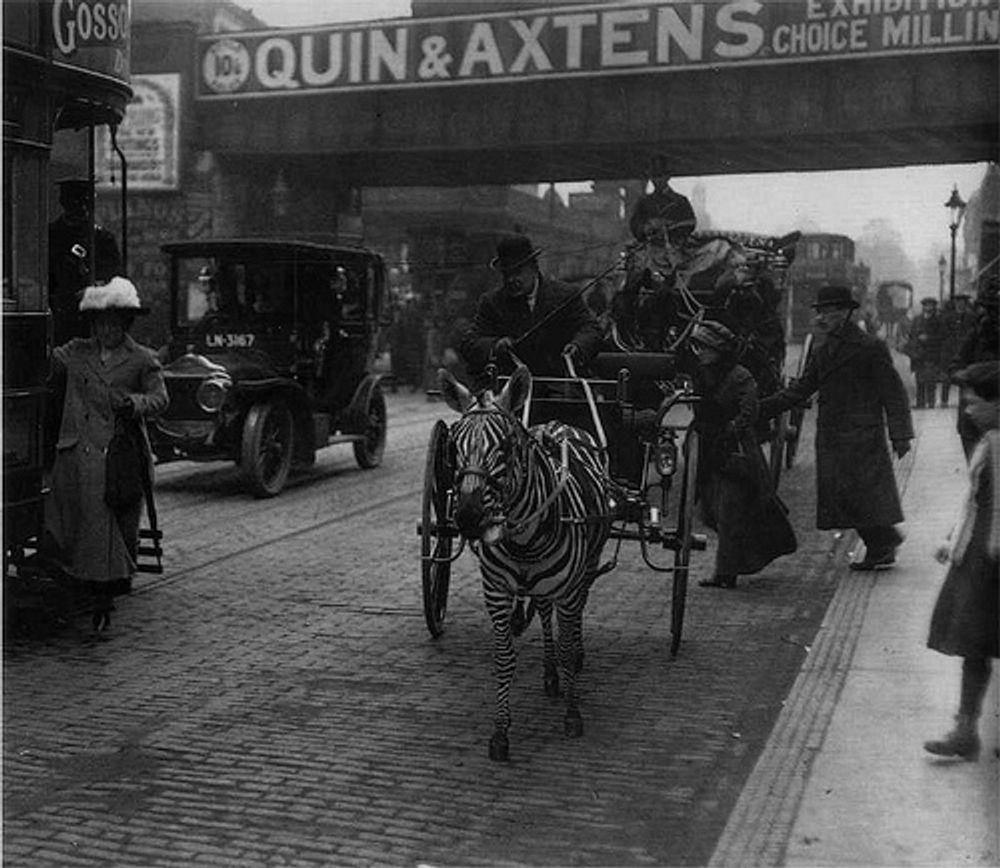
Yes that really is a man with a zebra in the middle of Brixton high street
But scratch below the surface and you discover it actually tells the story of a Gustav Grais who ran a circus of zebras and baboons at the start of the 20th century and would often be seen in a trap being taken by a zebra down Brixton High Street. So now you know.
Looking ahead
Murray-Watson is still a good PR executive at heart and is quick to spell out the potential for the brand. Not just in London, and the UK, but also internationally too.
“Brixton has a resonance that goes far outside of London, but around the world,” he says. “In such a crowded market is gin, you need to have a point of difference, a talking point and I really believe Brixton has a certain cache to it that certainly other parts of London don’t.”
“It’s why Brixton really does mean a million things to millions of people. It attracts such a wide and diverse mix of people, from all backgrounds and cultures. It is probably one of most diverse areas in Europe and is constantly changing.
“It’s why we wanted to create a gin that people of Brixton could be proud of. A brand that has an identity that celebrates both the older, traditional Brixton with the rich cultural Brixton we have today.”
Big changes
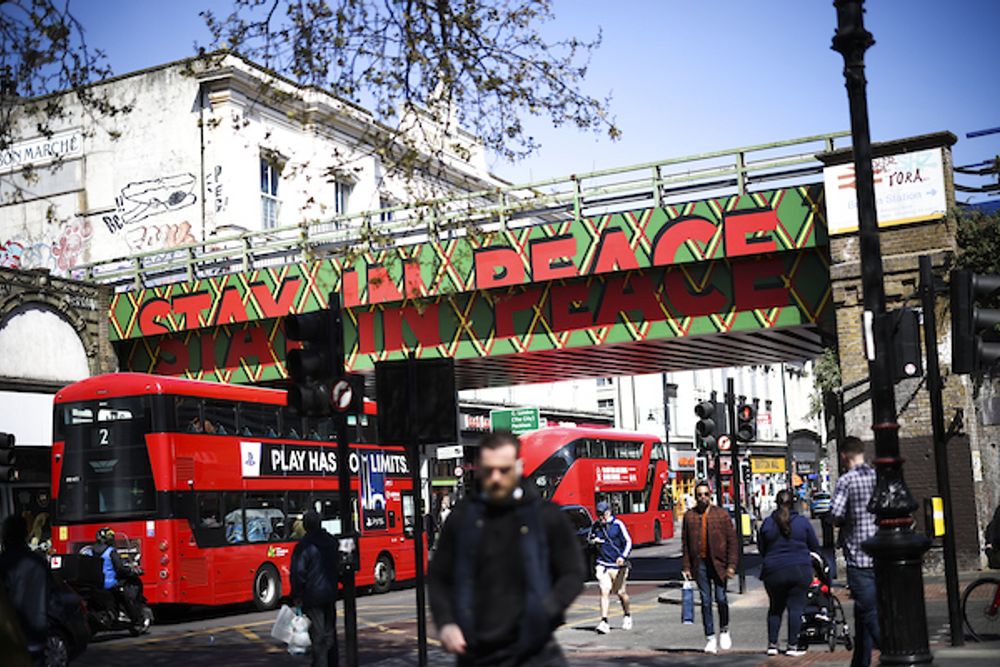
Murray-Watson hopes this is a gin that Brtixton can be proud of
It’s been quite the lockdown for Murray-Watson and Smith. For Brixton Gin was not the only new thing to come into their lives. They also now have a baby daughter, born just before the first lockdown in March last year, which meant moving home as well.
“Just in case anyone else was thinking about it, never try to launch a business in the same week you move house”, Murray-Watson says.
It has also been an enormous learning curve launching their own drinks brand. “It’s the small things that you don’t think of in advance that are the hardest to deal with,” he says. “Like will our paper stock work with our distiller’s labelling machine? The answer is no. I have spent many evenings putting labels on bottles.
“As a newcomer you don’t appreciate the complexity and length of the sales cycle. You can’t just go into a restaurant and give them a case of gin. Which is why we have beenpleased to have the support and expertise of Nightcap to work with. But it has been a rapid education with what you can and can’t do. Then there is the length of time it takes to get paid.”
There is also the not so insignificant issue of having to pay duty upfront before you can ship product to most of your customers.
“Your success can also become your biggest challenge,” he adds. If you are constantly paying duty up front on larger orders then it can become quickly hard to manage. That’s why we prefer to ship under bond to wholesale customers whenever we can. The fact everything is taking so much longer right through the supply chain is a big issue for a start up like ours.”
But ultimately it is about seeing the joy and excitement on someone’s face the first time they taste their gin that makes it all worthwhile, he says.
“It’s just wonderful when people have the faith in your gin to list it. We get really excited about it. Or when you see a mixologist take the gin and create something truly magical from it that really brings it to life. Those are the moments that make it all so very special,” he says.
- To find out more about Brixton Gin go to its website here. You can contact Andrew Murray-Watson at andrew@brixtonspirits.com


